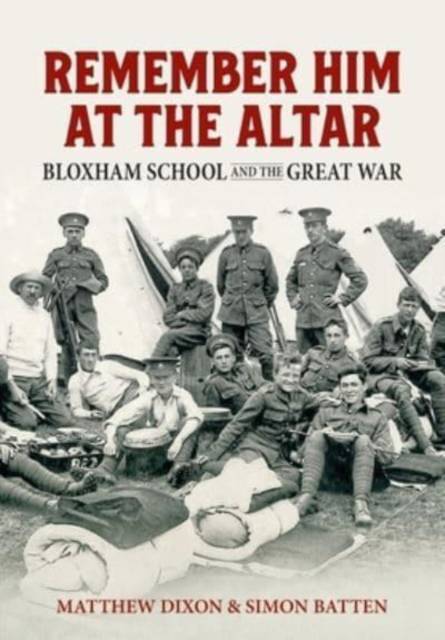
- Afhalen na 1 uur in een winkel met voorraad
- Gratis thuislevering in België vanaf € 30
- Ruim aanbod met 7 miljoen producten
- Afhalen na 1 uur in een winkel met voorraad
- Gratis thuislevering in België vanaf € 30
- Ruim aanbod met 7 miljoen producten
Zoeken
Remember Him at the Altar
Bloxham School and the Great War
Matthew Dixon, Simon Batten
Paperback | Engels
€ 34,95
+ 69 punten
Omschrijving
On 22 July 1916 Lieutenant Arthur Stevens of the 9th Battalion, Royal Fusiliers, sat down to write a letter to the chaplain of his old school, Bloxham School in Oxfordshire. Informing him of the death of Gordon Peecock, an officer in the same battalion as well as a contemporary at Bloxham, he had a favor to ask of the Rev. Hugh Willimott: 'As his closest friend out here, I would like to ask you to remember him at the altar.' Peecock was killed by machine gun fire coming from Prussian positions to the North of Ovillers on 7 July, a week into the Battle of the Somme. By the time the school received Stevens' letter the summer holidays had begun, and so it was not until the first Saturday of term in September that Gordon Peecock's name was remembered in the school chapel, and by this time Arthur Stevens too was dead, killed in early August at Pozières, a couple of miles away from where Gordon was killed. Arthur Stevens was 19 years of age.
Taking one small boarding school in rural Oxfordshire, this book tells the story of the 80 Bloxhamists who died in the Great War, tracing their lives from school to the grave, but it also examines the experiences of those who served and survived and looks at the way in which the lives of those at home were affected by the war. The authors take the story up to the present day to study the way in which the remembrance of those who fell has changed over the years, and what these changes tell us about how we view the war.
The two authors are uniquely well qualified to tackle this subject, having dedicated many years to researching the lives of the men whose stories form the centerpiece of this book. This research project, often a long and difficult process, is itself part of the story of how the 80 men continue to be commemorated at their old school.
Taking one small boarding school in rural Oxfordshire, this book tells the story of the 80 Bloxhamists who died in the Great War, tracing their lives from school to the grave, but it also examines the experiences of those who served and survived and looks at the way in which the lives of those at home were affected by the war. The authors take the story up to the present day to study the way in which the remembrance of those who fell has changed over the years, and what these changes tell us about how we view the war.
The two authors are uniquely well qualified to tackle this subject, having dedicated many years to researching the lives of the men whose stories form the centerpiece of this book. This research project, often a long and difficult process, is itself part of the story of how the 80 men continue to be commemorated at their old school.
Specificaties
Betrokkenen
- Auteur(s):
- Uitgeverij:
Inhoud
- Aantal bladzijden:
- 236
- Taal:
- Engels
Eigenschappen
- Productcode (EAN):
- 9781915113641
- Verschijningsdatum:
- 25/08/2022
- Uitvoering:
- Paperback
- Formaat:
- Trade paperback (VS)
- Afmetingen:
- 171 mm x 248 mm
- Gewicht:
- 480 g

Alleen bij Standaard Boekhandel
+ 69 punten op je klantenkaart van Standaard Boekhandel
Beoordelingen
We publiceren alleen reviews die voldoen aan de voorwaarden voor reviews. Bekijk onze voorwaarden voor reviews.








